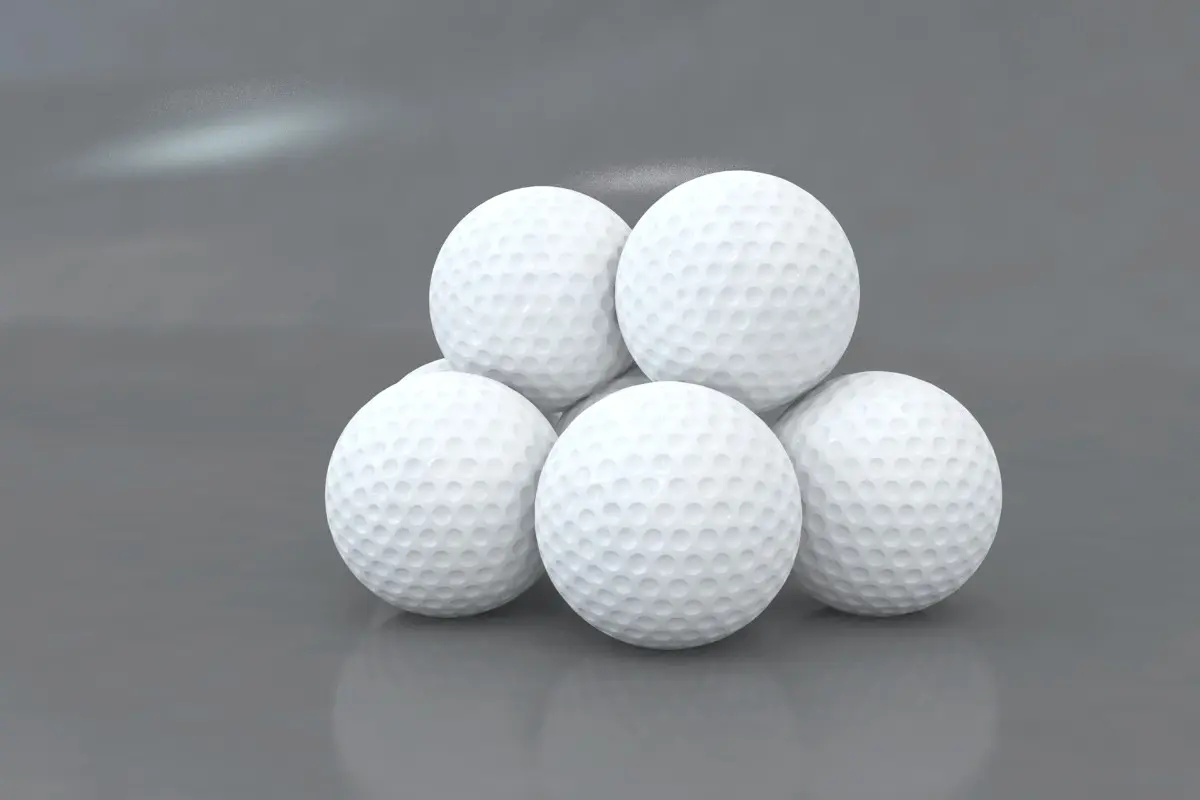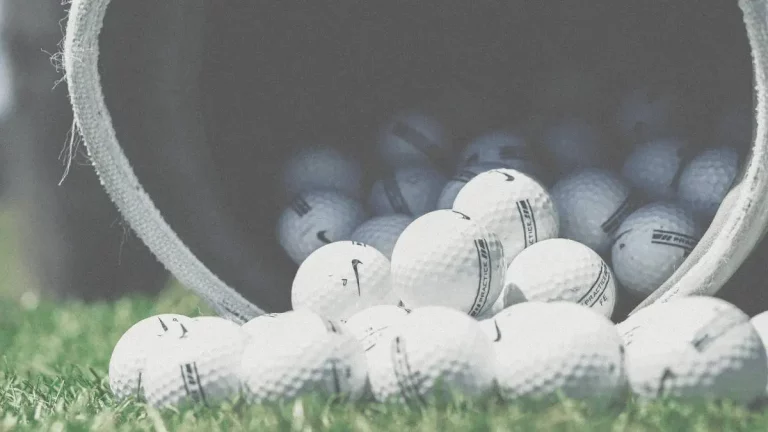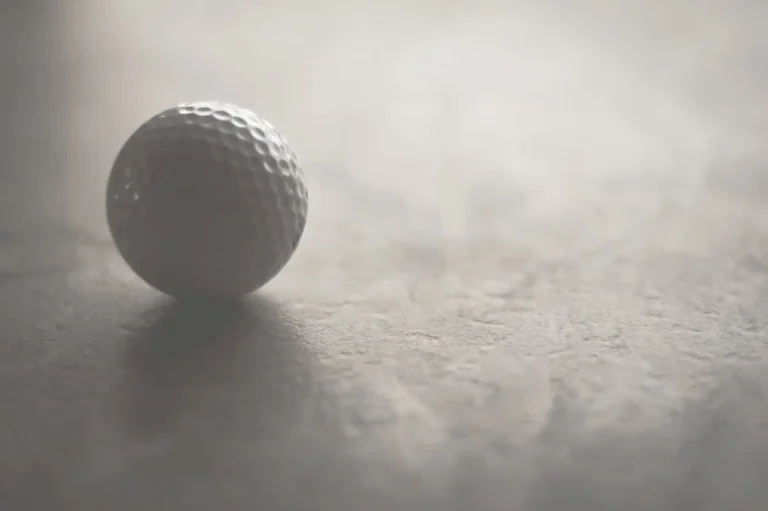Best Golf Balls For Beginners – pick the perfect ball for you
Choosing the right ball for you is very important, especially if you’re just entering the world of golf. At this point, it’s best to pick a ball that works for you and stick with it while you rack up some hours on the course.
With that in mind, what is the best golf ball for beginners? Here, I review my favorites including:
Wilson Staff Duo Soft Optix Golf Balls
Titleist DT Trusoft Prior Generation Golf Balls
Bridgestone E6 Soft Golf Balls
The Best Golf Ball for Beginners: Buyer’s Guide
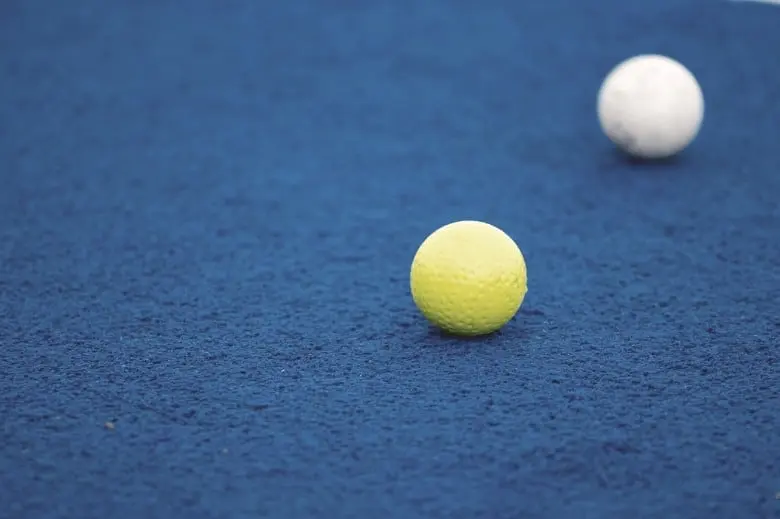
While it would be great to just read some reviews and immediately find the perfect ball for you, things are not quite that simple. It’s actually best to read reviews, narrow down your choices, and then test out those contenders.
Comparing Golf Ball Designs
Selecting the right golf balls begins by comparing each one’s design. Golf balls vary according to a number of factors, including dimples, quality, construction, and feel.
Dimples
Dimples are one of the key identifying components on a golf ball. They’re included not for aesthetic reasons but because they perform a specific function. Dimples smooth out the flowing air downward to push the golf ball upwards.
Ovals, teardrops, and hexagons are among the dimple shapes you’ll encounter. But circles are the most common. Manufacturers typically go for between 300 and 500 dimples per ball and 336 to 392 is the most popular bracket.
Note that for beginners, circular-shaped dimples are a good starting point. Balls with non-circular dimples may be short-lived, not ideal when you’re learning to drive and putt!
Cover Material
For cover material, there are two options: Surlyn and urethane. The general rule is that Surlyn offers more distance and a firmer feel. In contrast, urethane gives more spin and control.
Of the two, I advise beginners to choose Surlyn golf balls for maximum distance. Test out a range of the longest golf balls you can find that don’t sacrifice on softness. Rock-hard balls are not recommended for beginner’s golf.
Construction
Golf balls are constructed in a one-piece, two-piece, three-piece, or multilayer design. One-piece designs are quite basic and are not used on standard golf courses. Though you might find them at your local mini-putt course.
Two-piece designs offer a good balance between durability, distance, and price.
Budget depending, you can also go for advanced models. Three-piece designs boast a layer of rubber between the core and cover. This rubber makes for softer balls and more spin. Multilayer designs employ four or even five layers. As you can imagine, price is often proportional to the complexity of construction.
For beginners, I recommend two-piece balls as they’re the easiest to control. However, three-piece designs are also a good option if you feel confident in your ball control skills.
Compression
Golf balls deflect or compress, upon impact. Compression is given as a number between 0 and 200. A 200 golf ball doesn’t compress, while a 0 golf ball offers a deflection of 5mm or more.
Lower compression balls are softer and require slower swing speeds, making them more suited to beginners. Higher compression balls require a more adept swing and greater speed.
Testing Golf Balls to Find Your Match
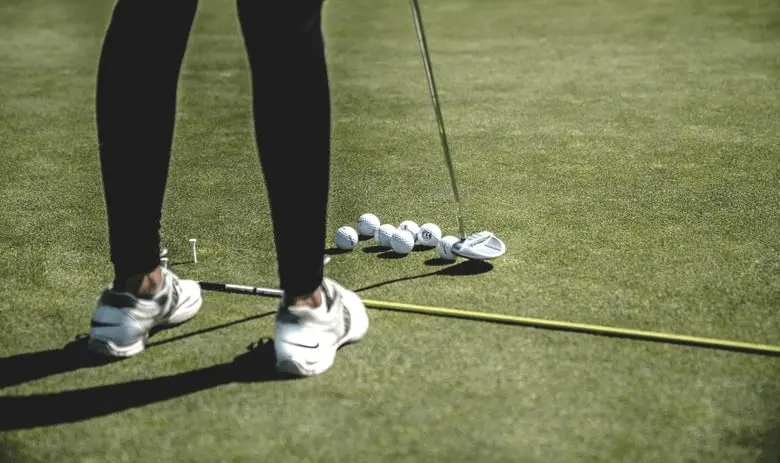
Feel and sound are the keywords when it comes to testing out golf balls. You may think these are superficial factors, but they matter a lot to your game. Feel refers to how hard or soft a ball is and sound provides an indication of how well you’ve hit the ball.
Before making a bulk purchase, choose three or four from each ball type and go test them out. Here are the tests you should consider doing to make sure the balls offer versatility. As an added bonus, you’ll get some practice in too.
1. Putter Test
Hit a few putts, long and short. Really focus on the feel and sound for each ball you try. While this is unlikely to yield a final result, it’s an excellent way to start eliminating any balls you’re on the fence about.
2. Chipping Test
Take a variety of chip shots for the golf balls you’ve picked. Try out high shots, low shots, running shots, and any other type of shot you usually employ.
Go beyond just looking for feel and sound. Evaluate the spin of the ball, does it spin as much as you’d like? Does it feel too soft or too light when you hit it?
3. Pitching Test
Again, the idea is to try the available variations. So go for short ranges starting at 20 yards up to long ranges between 80 and 90 yards. Or as far as you usually hit pitch shots.
Short ranges will show you if the ball spins enough. Long ranges, on the other hand, can tell you if the ball spins too much.
4. 7-Iron Test
Try out your 7 iron club on the ball. In addition to feel, sound, and spin, you’re looking for distance here. Don’t just choose the ball that goes the farthest, but rather the one that gives you the most control.
5. Driver Test
You’ll be working with the same checklist as in previous tests but with driver clubs. Try out a few shots for each ball and see which one delivers the best results and the most control. After all, it’s a lot cheaper to buy new balls than it is a new driver!
Reviews of the Best Beginner Golf Balls
I’ve handpicked a selection of the most popular golf balls for beginners. They vary in softness and construction complexity so there’s bound to be the perfect ball for you below. Let’s get started with a classic brand, Wilson.
Wilson Staff Duo Soft Optix Golf Balls

The Wilson Staff Duo is one of the best soft golf ball options out there. It comes with a compression of just 29 and will give you a great feel on impact. This is ideal for beginners as it’s accommodating of slower swing speeds.
Constructed in a two-piece fashion, the ball is easy to control if you’re just starting out your game. It’s also designed to provide the lowest driver spin rate for easier straight shots. Other benefits include long-distance performance thanks to the hard ionomer blend used as a cover material. This model has been optimized in terms of dimple pattern for enhanced performance.
Pros:
- Low compression rating of 29
- Ionomer blend for long-distance performance
- Improved dimple pattern
- One of the lowest driver-spin ratings for a two-piece ball
Cons:
- Might be too light for fairway woods and drivers
Callaway Hex Bite Golf Balls

If you’re looking for something slightly more advanced, opt for the Callaway Hex Bite balls. They’re still on the softer side but are more complex with their spin rating and three-piece design.
Intermediate players might get the best use of these, but they’re a great option if you’re feeling confident. The Hex’s aerodynamic pattern together with the soft outer cover allows for exceptional performance.
The Callaway Hex Bite balls will give you optimal distance and flight, together with excellent stopping ability. And all without a huge price tag, a win-win in my book.
Pros:
- Three-piece design for a softer feel and added spin
- HEX Aerodynamics pattern optimizes spin
- Soft outer cover enhances performance
- Stopping ability as ball backs up a few feet
Cons:
- More difficult for beginners to control than two-piece options
Titleist DT Trusoft Prior Generation Golf Balls

Consistency is key to improving one’s game, and that’s what Titleist has focused on in their Trusoft Prior Generation balls. They promise consistent ball flight thanks to the new and enhanced dimple pattern design.
Their low compression core is one of the softest cores out there. It’s designed for a minimal spin in long shots to get you the most distance. This is further enhanced by the ionomer cover for a soft feel and good short game capabilities.
The soft feel is optimal for slower swingers. That being said, if you’ve developed a fast swing, these may not work for you as well.
Pros:
- Excellent dimple pattern for consistent ball flight
- Minimal spin on long drives
- Ionomer cover for a soft feel
- Adapts well to lower swing speeds.
Cons:
- Don’t work as well for fast swingers.
Bridgestone E6 Soft Golf Balls

The Bridgestone E6 Soft features a Surlyn cover for a firmer feel and long-distance flight. The Advanced Mantle Layer also helps here as it retains its shape when compressed to counteract the backspin of the driver and add speed.
While constructed in a three-piece design, these golf balls are the perfect choice for beginners as with a good balance of firmness, medium compression, and low spin. Each ball should fly consistent, straight and long-distance trajectories. This ball was designed with the slow to medium-fast swinger in mind.
Pros:
- Advanced Mantle Layer for excellent distance performance
- Surlyn cover for a firmer feel
- Low spin, medium compression for straight and long shots
- Fits players with a slow to medium swing speed
Cons:
- May feel too firm especially when you get more practice under your belt
Wilson Golf Tour Velocity

Another entry by Wilson and deservedly so. This Tour Velocity is perhaps more aimed towards absolute amateurs than beginners. It’s even advertised as a ball for the recreational player.
As such, the Tour Velocity offers low compression at great value. An excellent option for your first ball if you’re expecting to lose a few on the course! However, it’s still well-designed to give you a good feel when you’re trying to up your game.
Its low-mid compression core doesn’t take much getting used to, and will help you get good distance. The main design focus here is distance, so don’t expect much spin.
Pros:
- Low compression ball to adapt to lower swing speeds
- Long-distance performance
- Excellent value for money
- Good feel on impact
Cons:
- Not great for beginners who have spent a bit of time on the course. Best for newbies
Conclusion
As I said earlier, choosing the ideal golf ball is really a matter of personal choice. But I do have one winner in mind which I think suits most beginners.
The Wilson Staff Duo Soft Optix is the ideal option when you’re getting more games under your belt. It has one of the lowest compression ratings you can find at just 29. feels great upon impact, and works with slower swing speeds.
Thanks to the two-piece construction, you’ll find no problems controlling this one or handling its spin. It even has one of the lowest driver spin ratings on the market. For the cover material, they’ve gone for the hard ionomer blend for optimized distance performance. Something that is further complemented by the clever dimple design.

